Vertebrate Zoology Exam 1 - Teleosts
1/50
Earn XP
Description and Tags
Other flashcards for Vertebrate Zoology can be found under the tag "11:216:325"
Name | Mastery | Learn | Test | Matching | Spaced |
|---|
No study sessions yet.
51 Terms
What clade comprises most of Actinopterygii?
Teleostei

What is the shape of teleosts’ caudal fin?
Homocercal - appears symmetrical on the outside, but asymmetrical internally
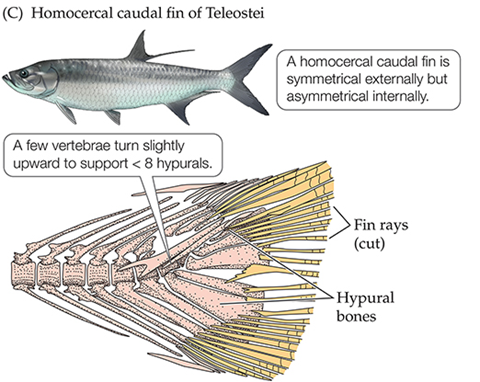
What is so special about teleosts’ jaws?
Have mobile premaxilla (skull bone at tip of snout) that allows premaxillae to protrude (aka jaw protrusion)
Many teleosts have pharyngeal jaws
Leads to great diversity of oral jaws and pharyngeal teeth
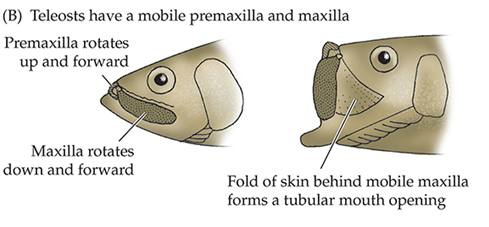
What is unique about teleosts’ scales?
They have derived a lack of ganoine in their scales, unlike the ancestral Actinopterygian state
Most basal teleosts have cycloid scales (round)
More derived teleosts often have ctenoid scales (comblike)
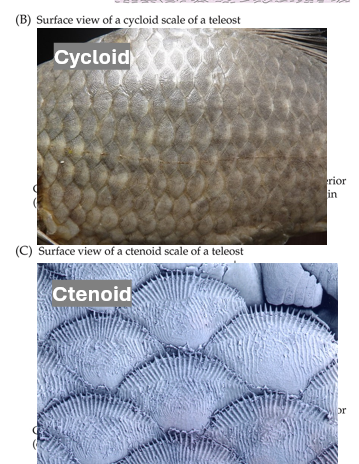
Elopomorpha
Clade made of tarpons, true eels, bonefish, ladyfish
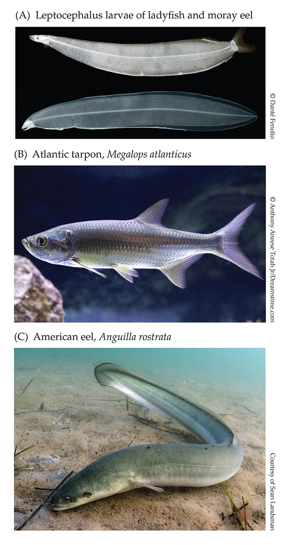
What is the synapomorphy shared by Elopomorphs?
Leptocephalus (meaning “small head”) - specialized larva
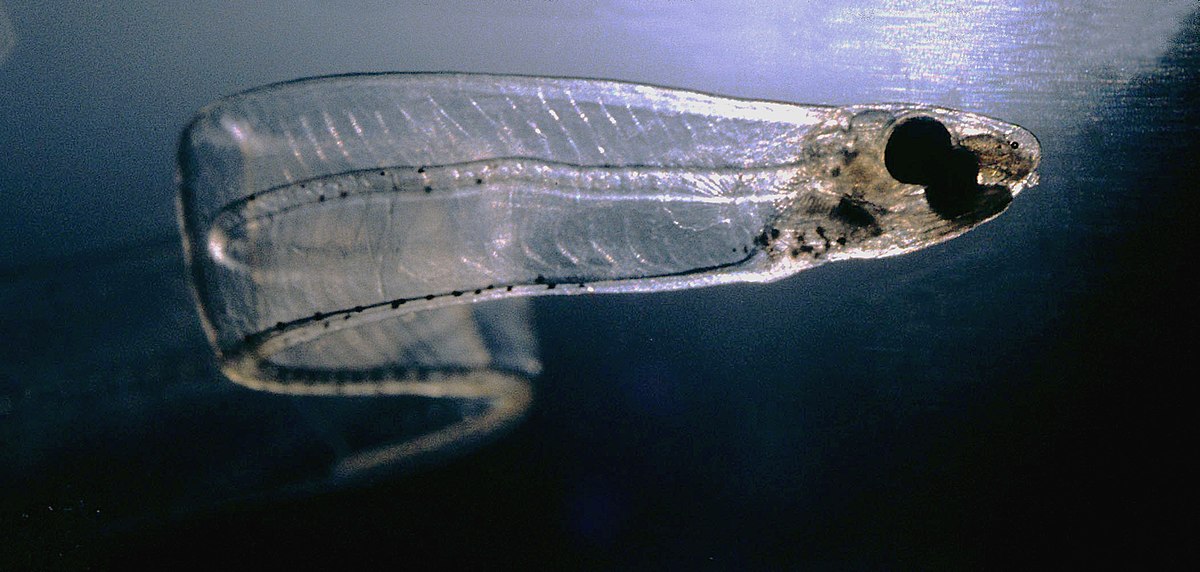
Otophysi
Subgroup containing Cypriniformes, Characiformes, Siluriformes, and Gymnotiformes
What characteristic do members of Otophysi share?
Weberian apparatus - series of modified vertebral elements that connect the gas bladder with the inner ear
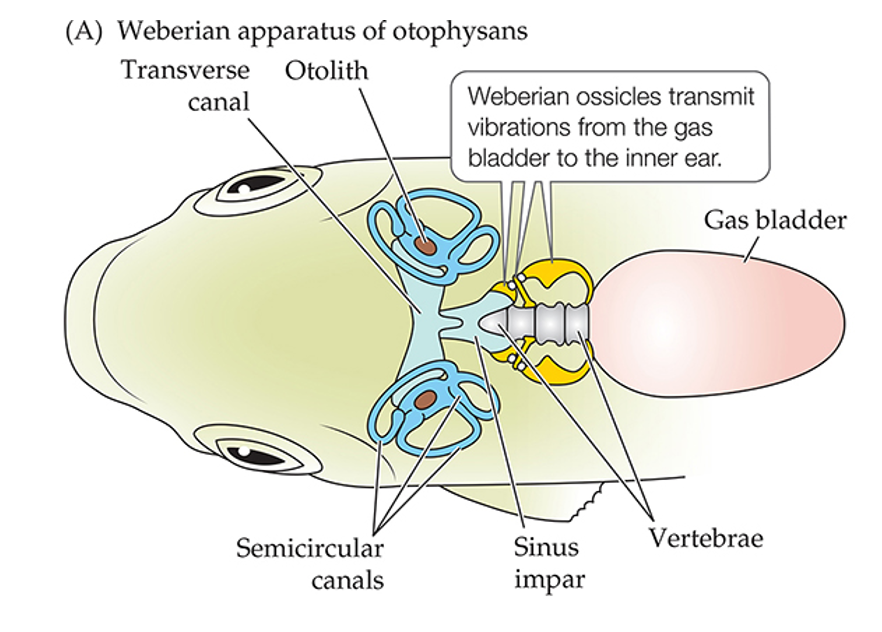
Cypriniformes
Clade of carps, minnows, suckers, chubs, loaches, + more

Describe Cypriniformes.
Clade of carps, minnows, suckers, chubs, loaches, + more
Primarily freshwater
Commercially, ecologically, and scientifically important
EX: Zebrafish (Danio rerio) are a model organism for studying vertebrate genetics

Characiformes
Clade of piranhas and tetras (+ more)

What is notable about Characiformes?
🦷 Their teeth! VVVV
Common in freshwater fishkeeping
Image: Pacus are herbivorous, but have teeth to grind brazil nuts.
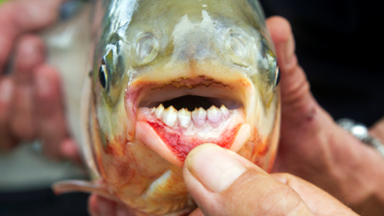
Siluriformes
Clade of catfishes
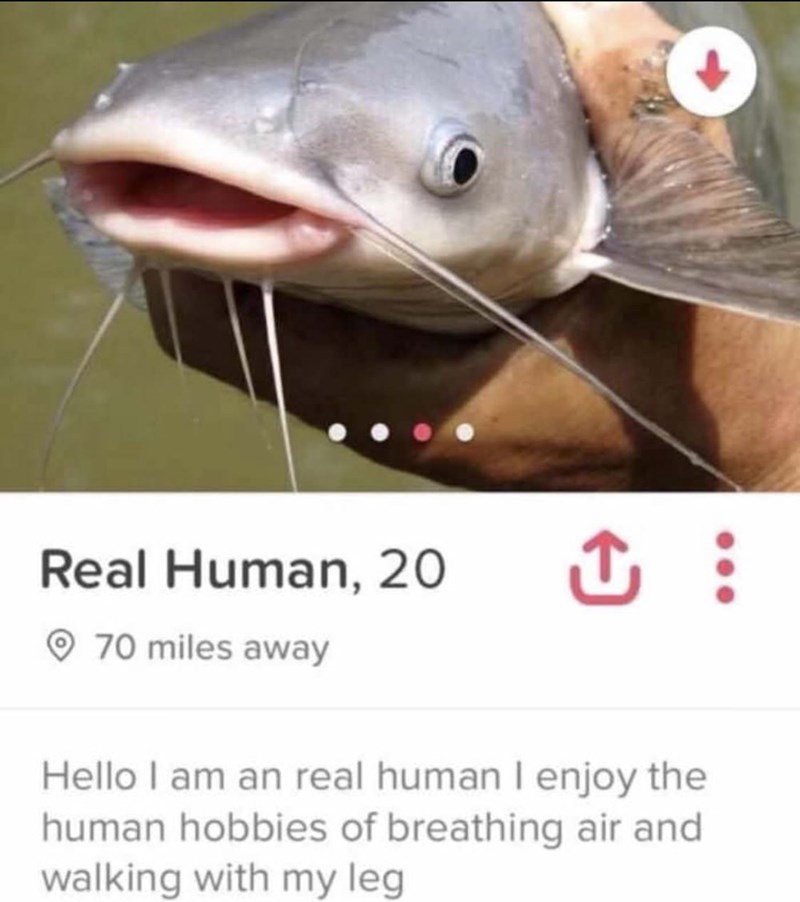
What is unique about Siluriformes?
No scales (skin instead)
Sensory barbels covered in taste buds
Spine at the leading edge of the dorsal and pectoral fins
Also: Most catfish are predators and many possess ⚡ electroreceptive organs
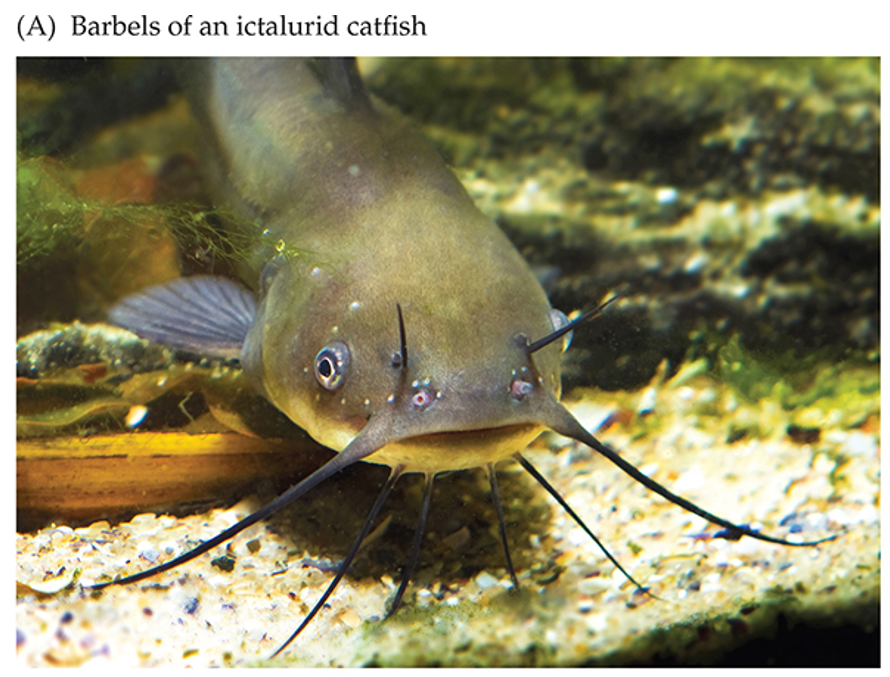
Gymnotiformes
Clade of electric eels and South American knifefish
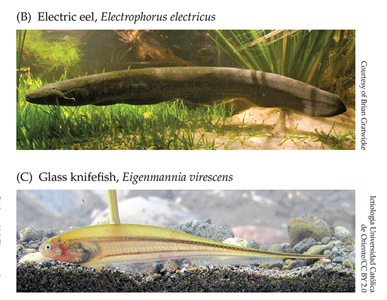
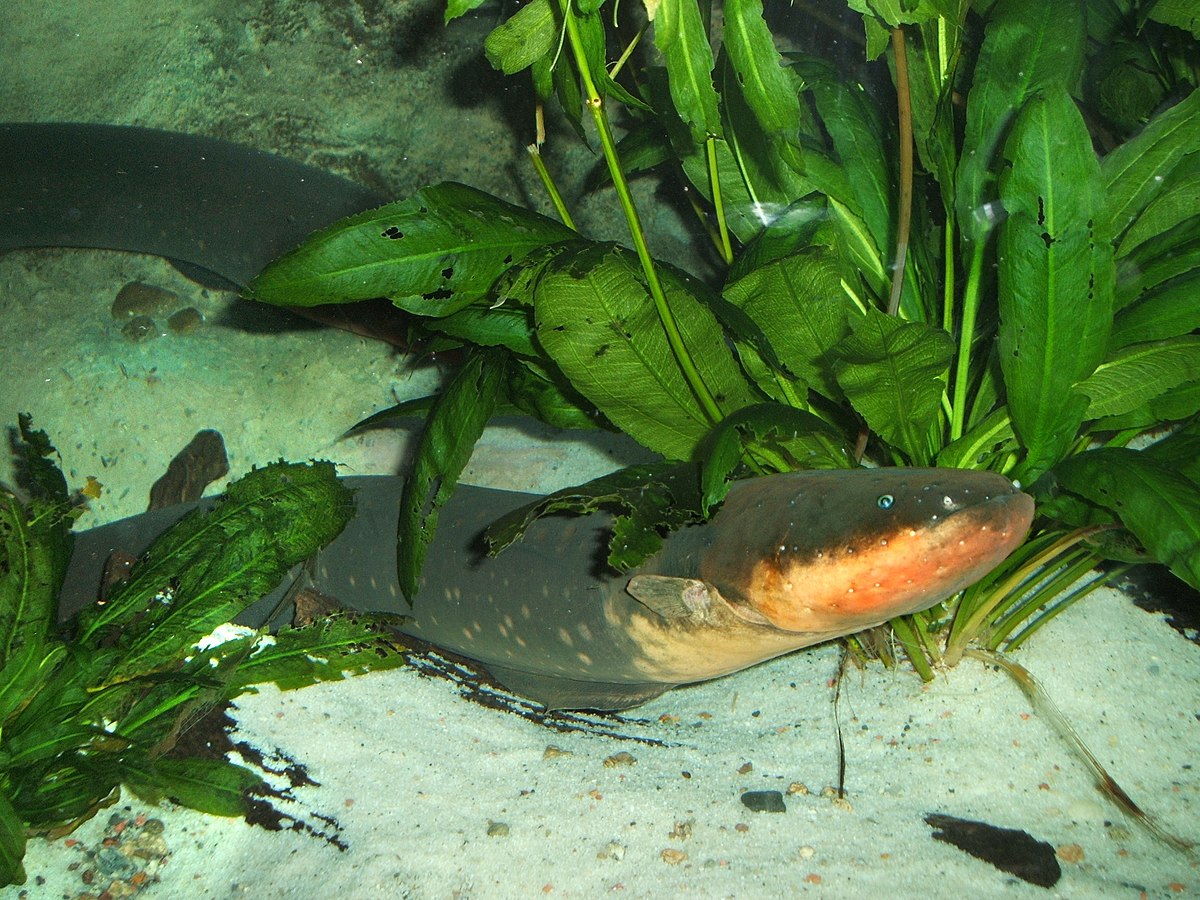
What clade do electric eels belong to?
Gymnotiformes
(They are NOT true eels, which are Elopomorphs)
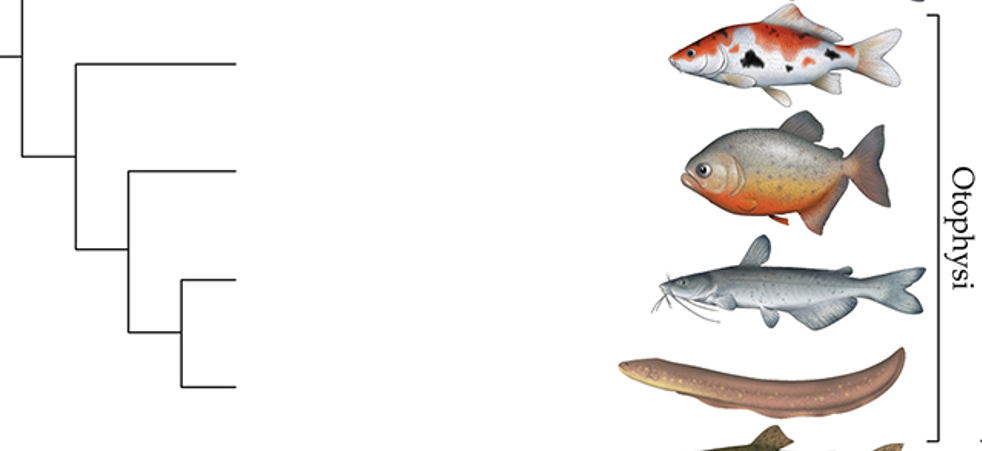
Fill out this tree of Otophysi.
Cypriniformes are the most basal.
Siluriformes and Gymnotiformes are sister groups and the most derived clades.
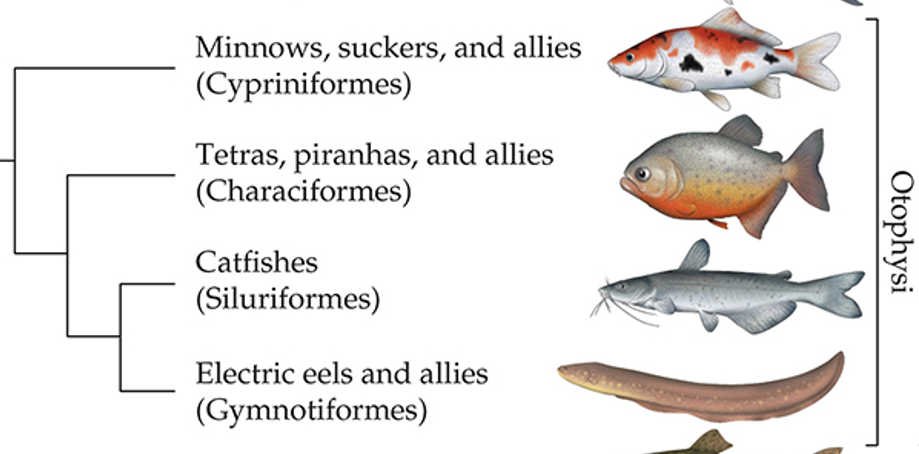
Compared to the rest of Teleostei, is Euteleostei more derived or basal?
Derived
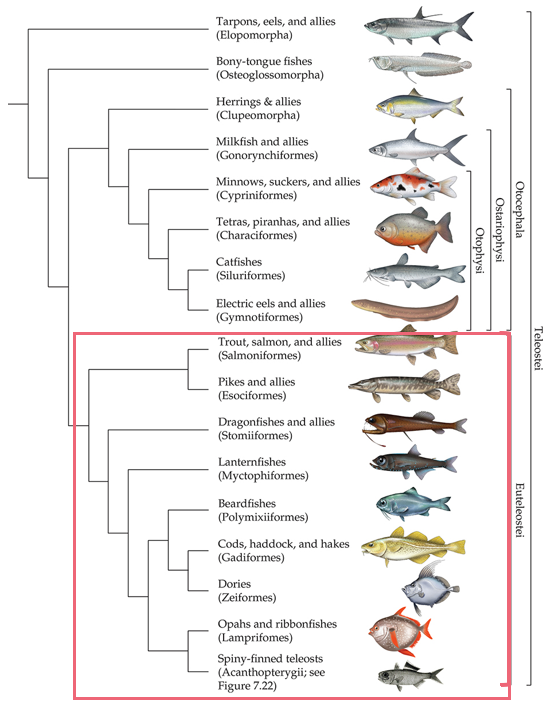
Salmoniformes
Clade of salmon and trout

Esociformes
Clade of pikes and pickerels
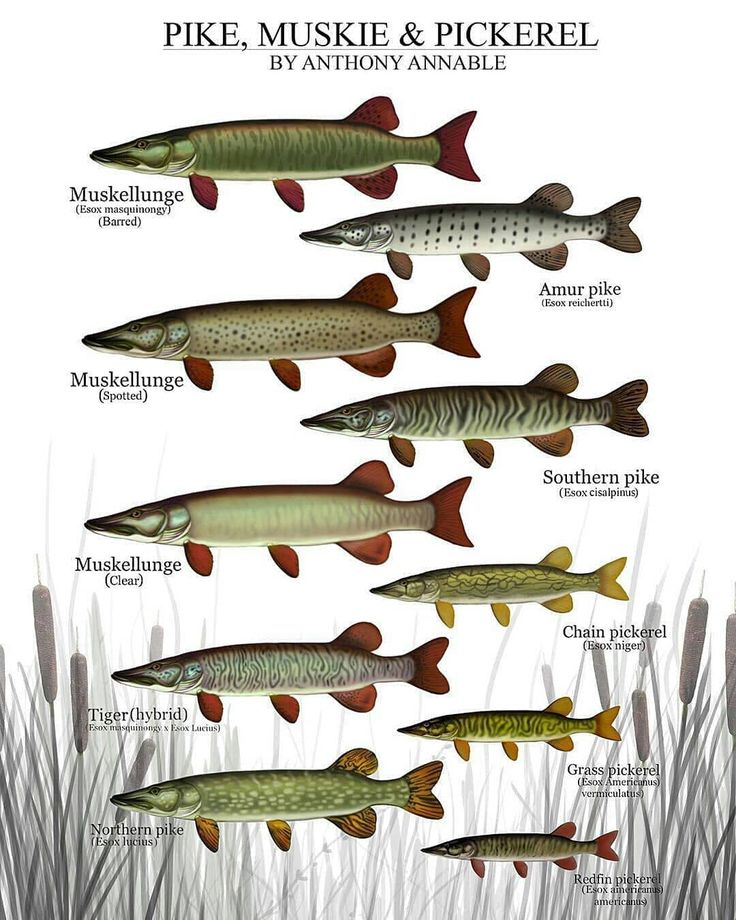
What are the most basal Euteleosts?
Salmoniformes and Esociformes
They are sister taxa.
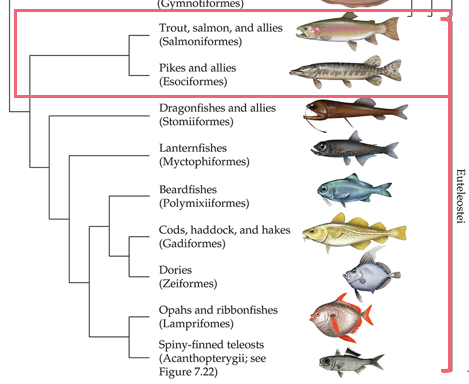
Stomiiformes
Clade of dragonfishes and allies

What is notable about Stomiiformes?
There are at least trillions of bristlemouth individuals in the ocean, making them the most abundant vertebrates
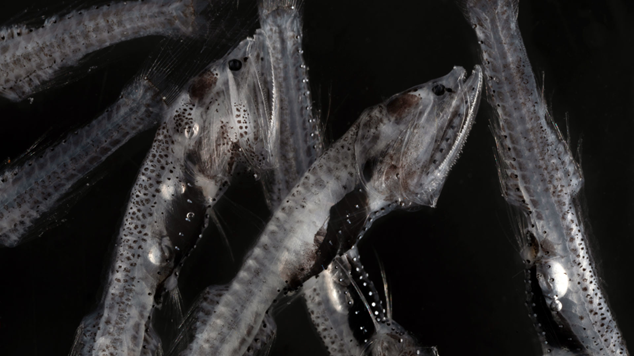
Myctophiformes
Clade of lanternfish

Gadiformes
Clade of cods, haddocks, and hakes

Lampriformes
Clade of Opah and ribbonfish
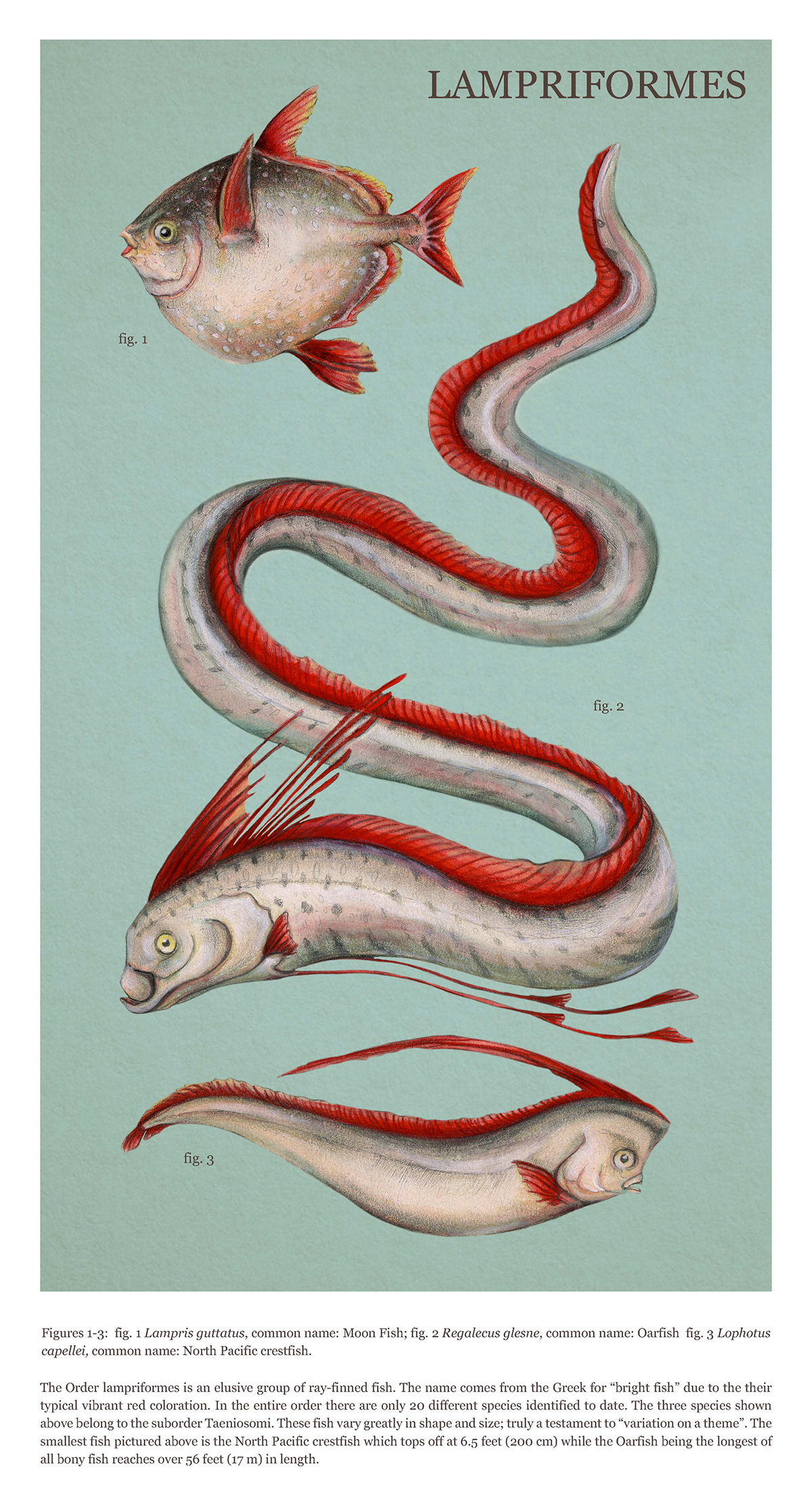
Example question: What clades do Characiformes belong to?
Otophysi
Ostariophysi
Otocephela
Teleostei
Actinopterygii
Osteichthyes
What does Acanthopterygii refer to?
Spiny-finned teleosts

Name the 4 most basal clades in Acanthopterygii.
🔦 Trachichthyiformes (flashlightfish and allies)
🐿 Holocentriformes (squirrelfishes)
🐸 Batrachoidiformes (toadfishes)
Gobiiformes (mudskippers and gobies)
Percomorpha
Clade of more derived Acanthopterygians
All Acanthopterygians except for Trachichthyiformes, Holocentriformes, Batrachoidiformes, and Gobiiformes

What are the most basal Percomorphs?
Syngnathiformes (seahorses) and Scombriformes (mackerels and tunas)
They are sister clades.
This was determined by molecular phylogenetic research.

What 4 clades make up Carangaria?
🏹 Toxotiformes (Archerfishes)
🎃 Carangiformes (Jacks)
⛵ Istiophoriformes (Billfishes)
🥿 Pleuronectiformes (Flatfishes)

Anabantiformes
Clade of gouramis, betta fish, and snakeheads
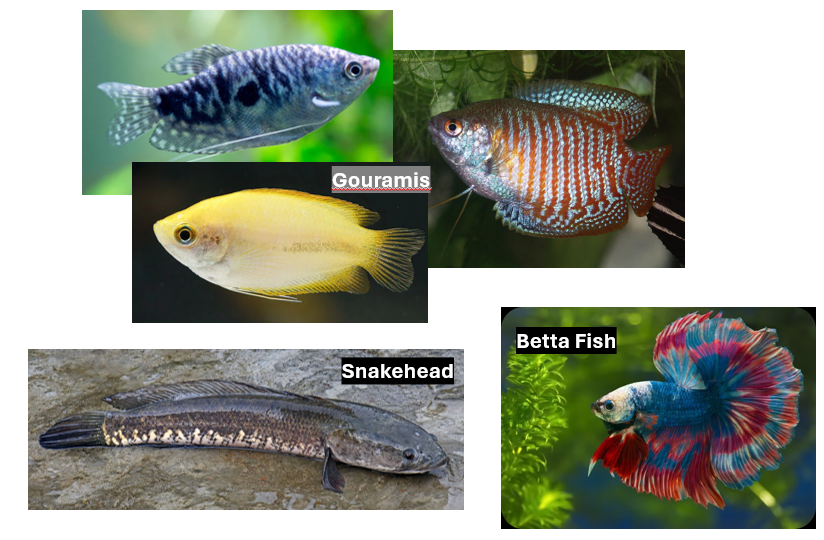
What clade is the sister group to Carangaria?
Anabantiformes (Gouramis)

Syngnathiformes
Clade of seahorses, pipefishes, and allies
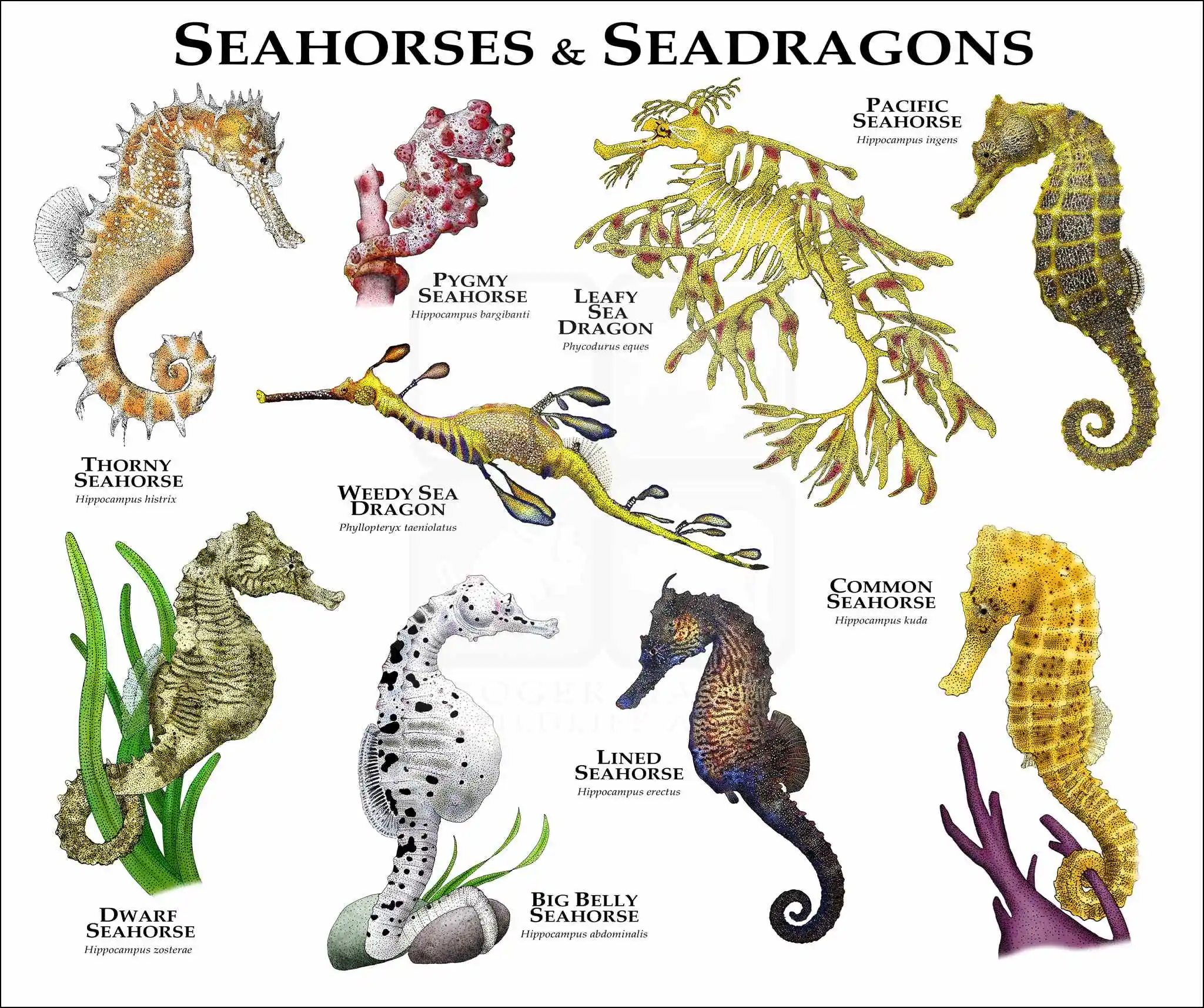
Scombriformes
Clade of mackerels and tunas

Toxotiformes
Clade of archerfishes
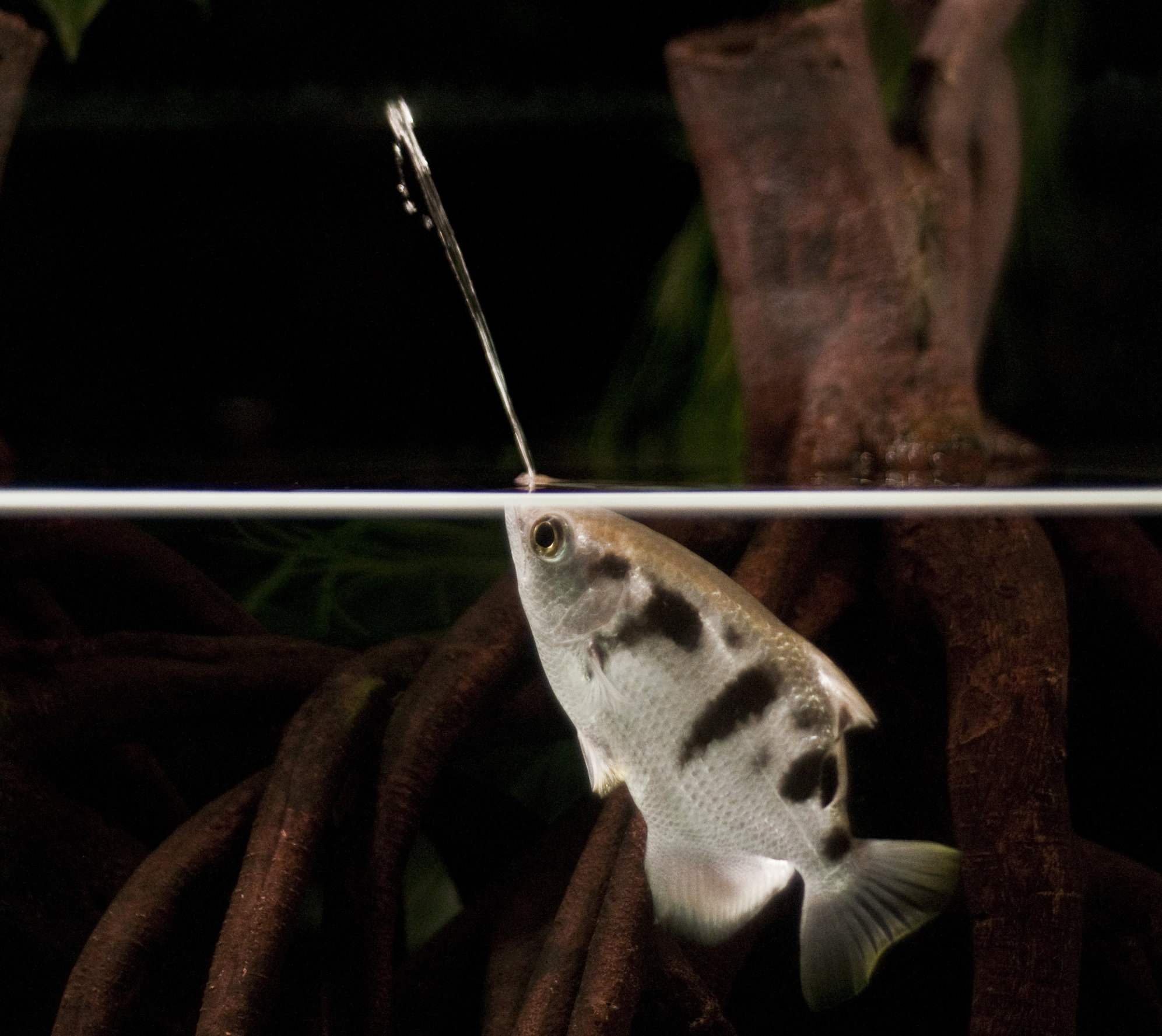
Carangiformes
Clade of jacks

Istiophoriformes
Clade of billfish (marlins, swordfish, and sailfish)
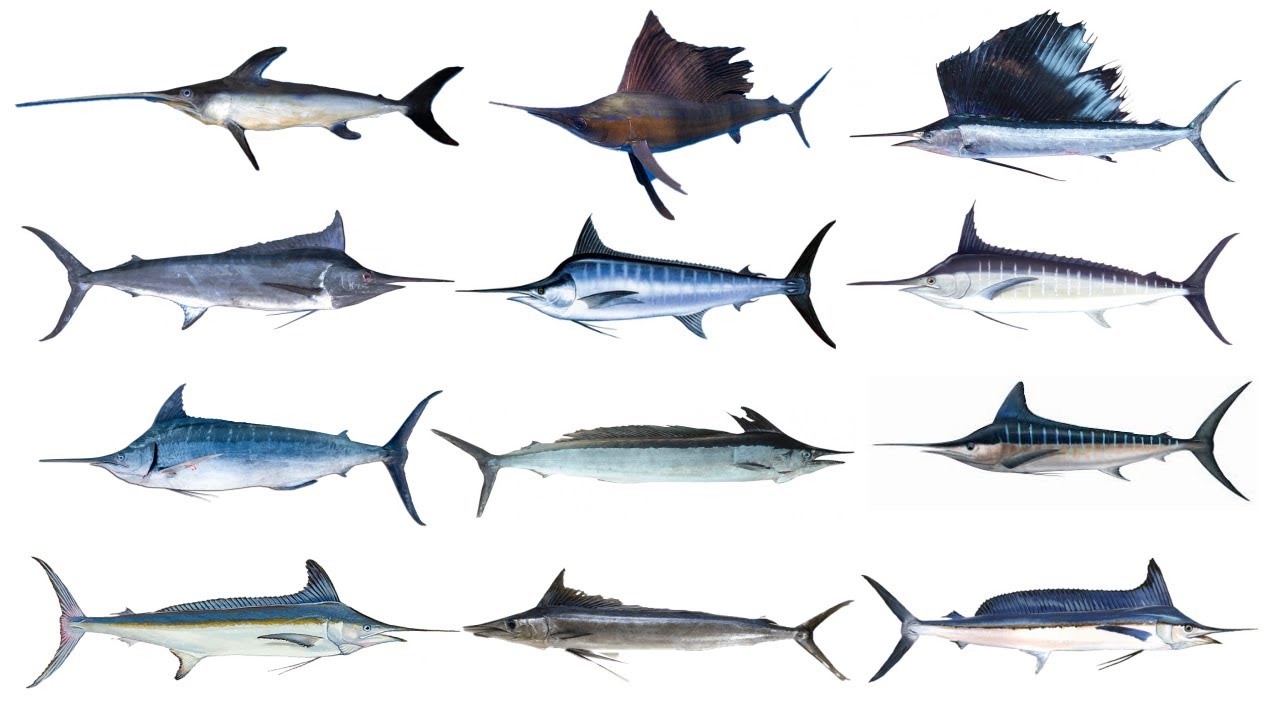
Pleuronectiformes
Clade of flatfishes

Cichliformes
Clade of cichlids

Beloniformes
Clade of needlefishes and flyingfishes

Cyprinodontiformes
Clade of killifishes, mosquitofish, mollies, and livebearers
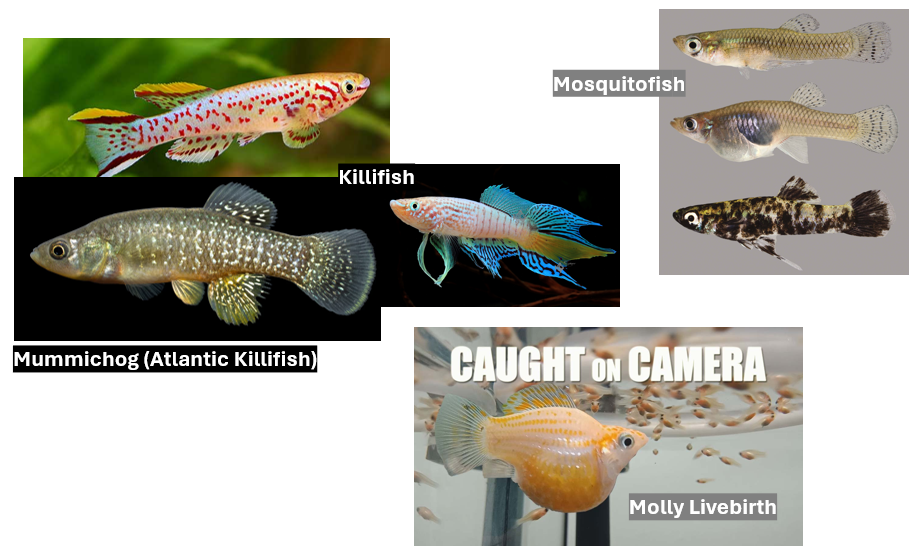
Percidae
Family of true perches

Scorpaenidae
Family of scorpionfishes
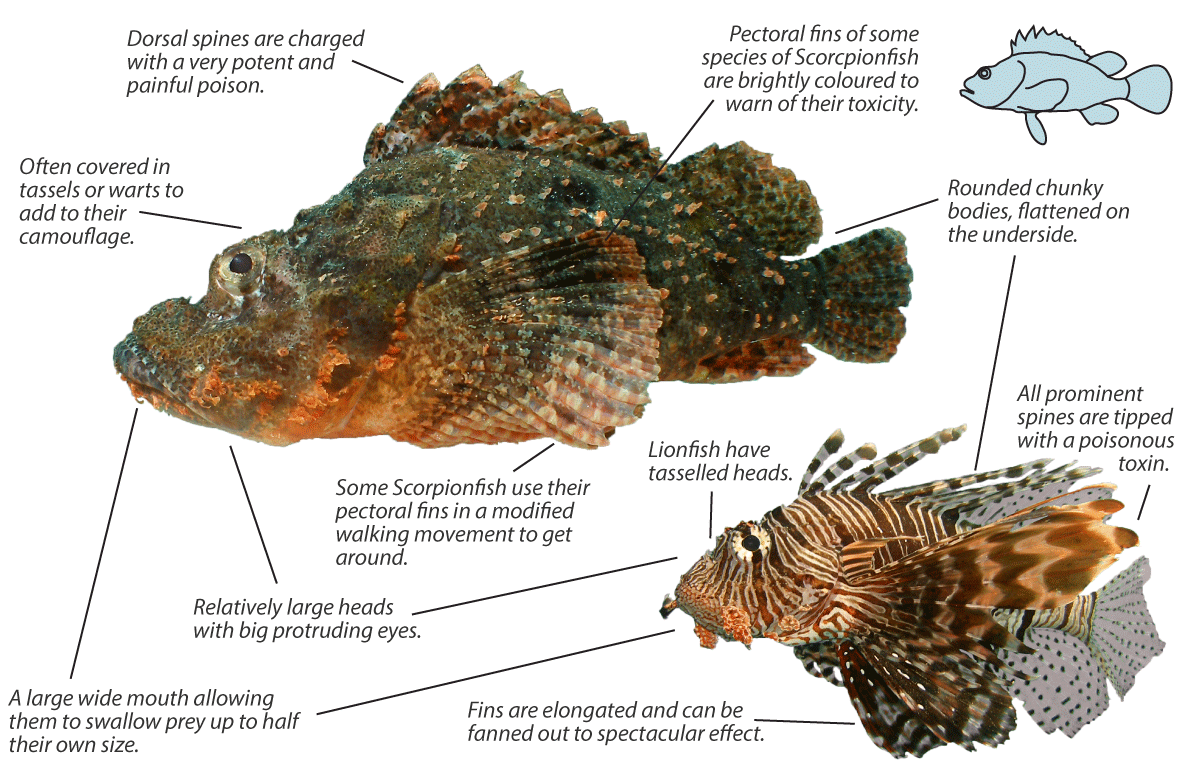
Labriformes
Clade of wrasses and parrotfishes
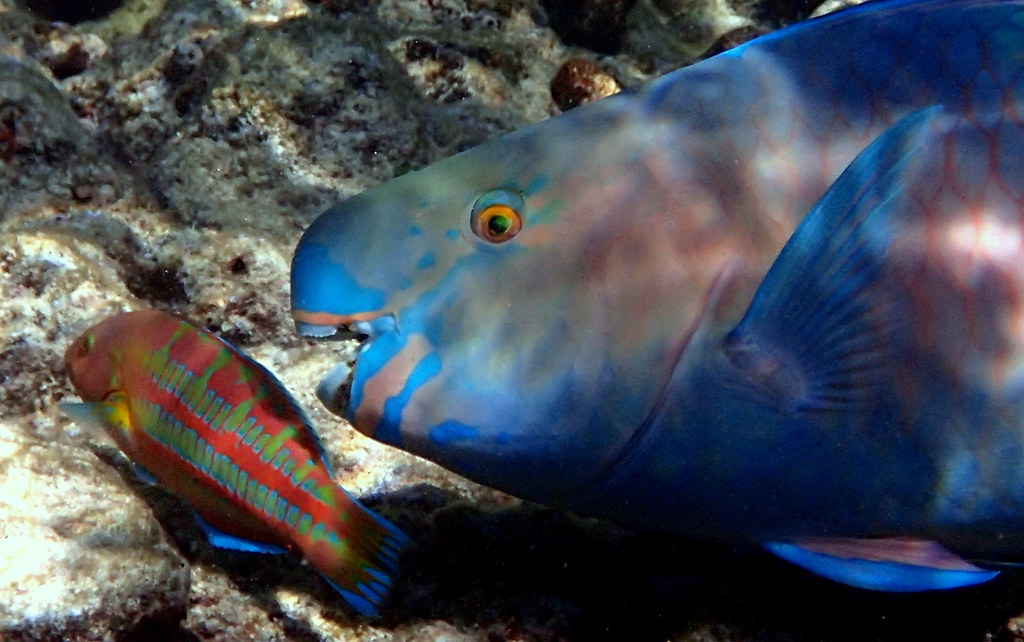
Lophiiformes
Clade of anglerfishes
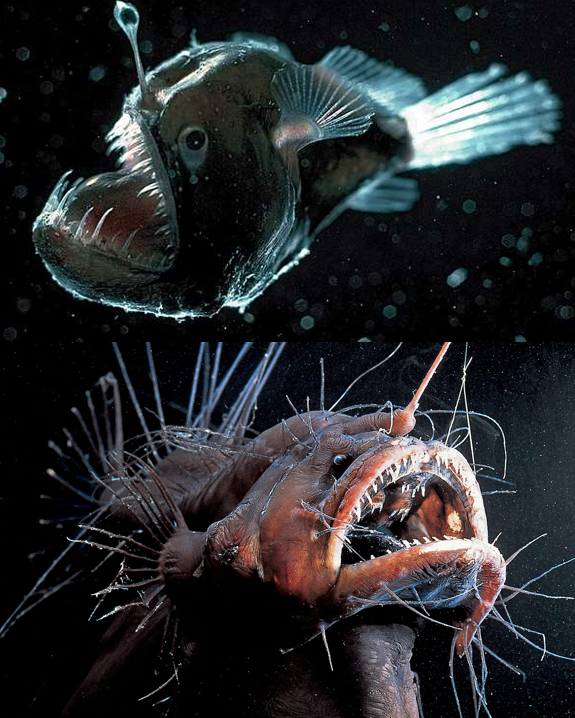
Tetraodontiformes
Clade of pufferfish, molas (ocean sunfish), and allies
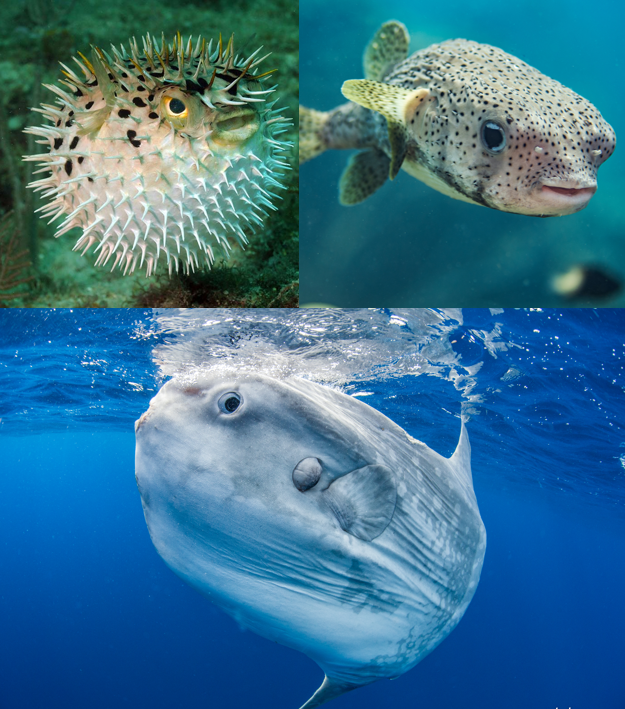
Are Labriformes (wrasses and parrotfish) more closely related to Perciformes or Lophiiformes and Tetraodontiformes?
Neither.
This is an unresolved polytomy in Eupercaria.
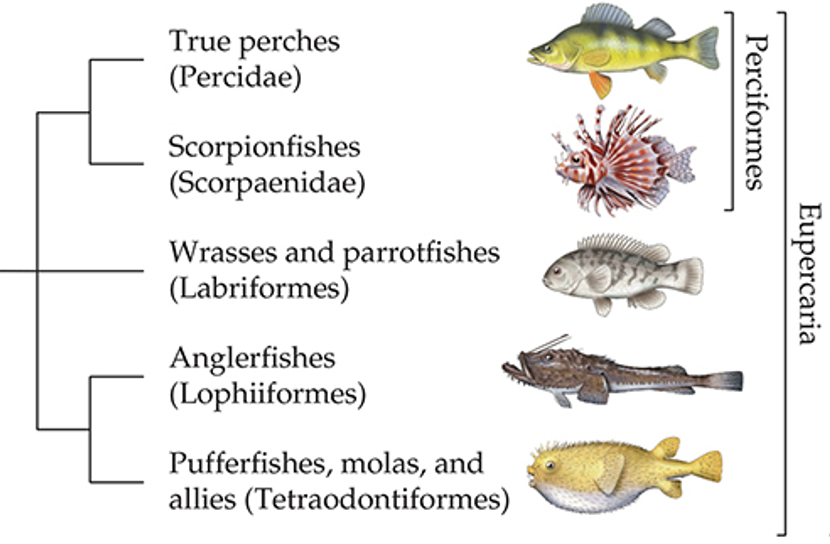
Eupercaria
Clade of 4 clades:
🦂 Perciformes (true perches and scorpionfishes)
🦜 Labriformes (wrasses and parrotfishes)
🎣 Lophiiformes (anglerfishes)
🐡 Tetraodontiformes (pufferfishes and allies)
Perciformes
Clade in Eupercaria made of 2 families:
Percidae (true perches)
Scorpaenidae (scorpionfishes)
